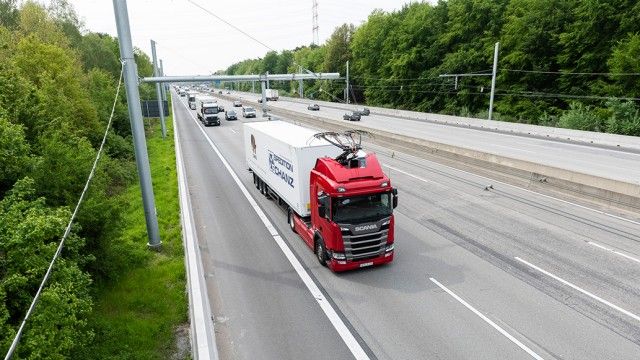
Electric roads a better option for UK freight?
HGVs emit a disproportionate amount of CO2 relative to their total miles driven. Lowering those emissions is important.
Summary: A study by the Electric Roads Consortium concluded that a nationwide Electric Road System (ERS) would be the most efficient and fastest way to decarbonise the UK freight sector. An ERS-powered HGV would much less energy than a hydrogen-powered one, generate bigger savings in GHG and create or support thousands of jobs in the UK.
Why this is important: HGVs emit ~ 18% of all road vehicle CO2 emissions in the UK despite only representing 1.2% of the total number of vehicles on the road and 5% of total miles driven.
The big theme: Transportation has the highest reliance on fossil fuels of any sector. Approximately 95% of its energy comes from them. For 45% of countries transport is the largest source of energy related emissions and it is the second largest source for the rest. Changing how we transport ourselves and our goods helps with both climate change and with health and well-being issues and is a rich vein for investment.

The details
Summary of a story from Costain:
A study by the Electric Roads Consortium concluded that a nationwide Electric Road System (ERS) would be the most efficient and fastest way to decarbonise the UK freight sector, estimating that a national ERS would remove five percent of the UK’s total GHG emissions. An ERS-powered Heavy Goods Vehicle (HGV) would require three times less energy than a hydrogen-powered one. It would also generate between 10% and 20% bigger savings in GHG between 2025 and 2050 compared with pure battery solutions.
The study finds that an ERS comprising 5,500 single lane-km and 2,100 static charging stations could support UK logistics operations without any significant changes to current practices. It also has the potential to create or support 15,000 jobs in the UK. The consortium comprises Costain, Siemens Mobility, Scania, the Centre for Sustainable Road Freight, Ove Arup, Milne Research, Possible, SPL Powerlines UK, Box Energi and Clarke Infrastructure Planning.
Editors note: An ERS typically involves overhead electric cables and a catenary system on the roof of the vehicle that can extend upwards to make contact with the cables to provide power to the drivetrain and other electrical systems.
Why this is important
Let’s park for a moment the fact that this report comes from a consortium with a clear interest in making it happen. The idea might still be worth investors keeping an eye on. In the EU in 2020, road freight transportation accounted for 77.4% of the total inland freight transport followed by rail (16.8%) and inland waterways (5.8%). HGVs emit around 18% of all road vehicle CO2 emissions in 2021 according to UK Department for Transport figures, despite only representing 1.2% of the total number of vehicles on the road and five percent of total miles driven.
Consortium members, Siemens Mobility, Scania and SPL have trialed smaller electric road systems in Germany and Sweden. In Germany, the National Platform for the Future of Mobility (NPM) recommends equipping 300km of autobahns with overhead contact lines by 2023 and electrifying a total of 4,000km by 2030 to help the country reach its climate target of reducing greenhouse gas emissions in the transport sector by 40%.
Something a little more bespoke?
Get in touch if there is a particular topic you would like us to write on. Just for you.
Contact us
Please read: important legal stuff.

